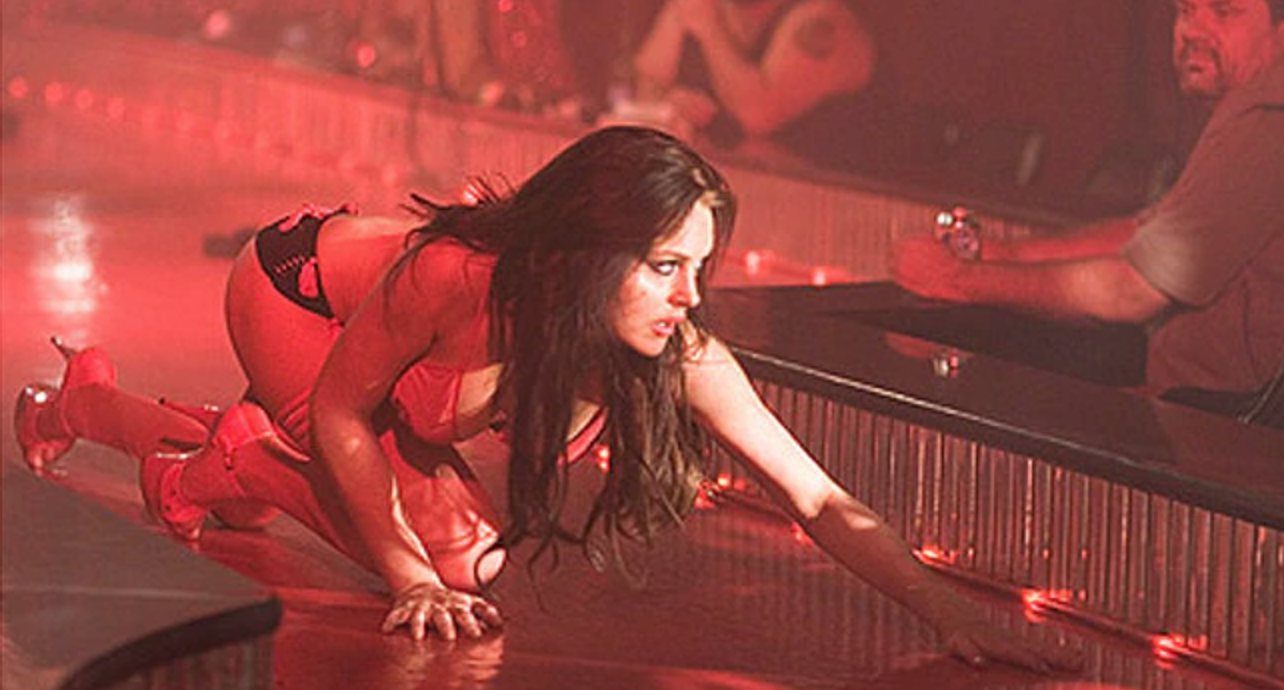By 2007, Lindsay Lohan had long ago lost the public’s interest in her actual acting. It was instead about what sort of tabloid fodder she should provide–and oh, how she provided it. Particularly the summer of I Know Who Killed Me‘s release. May 26th proved to be the first real zinger that initiated the celebrity mug shot trend, with Lindsay getting pulled over for driving under the influence and having a “usable amount” (isn’t any fleck usable?) of cocaine in her car. After coming out of rehab for the second time that year in July, Lindsay was seen sporting the infamous ankle monitor throughout her various beach and poolside activities. And by July 24th, Lohan was, once again, pulled over for driving under the influence and being in possession of cocaine–just two days before I Know Who Killed Me‘s debut in theaters.
So, no, in essence, there wasn’t a soul in whatever audience I Know Who Killed Me might have dredged up all that interested in Lindsay’s acting performance in it. As a result, director Chris Sivertson’s film received harsher criticism than perhaps it ought to have, with the feature being the first ever to rack up so many nominations and wins at the Golden Raspberry Awards (Lohan won for both of her roles as Aubrey Fleming and Dakota Moss).
However, like all things, time has allowed people a bit more perspective, with recent comparisons of I Know Who Killed Me to the style of Brian De Palma and David Lynch. In point of fact, the rich cinematography (mostly saturated in blue) is very akin to De Palma’s long-running preference for bombastic, Miami-inspired hues.
While Lohan’s interpretation of separated at birth twins Annie James and Hallie Parker was a staid, light-hearted one in keeping with the Disney brand, the viewer imagines it was harder for her to act in that role than the dual one of Aubrey/Dakota. For the latter is far more in keeping with who Lindsay was at this moment in her life: a cursing, stripping chain smoking, bottle loving sex kitten at war with the good girl aspect of herself. That good girl aspect–Aubrey–is abducted one night after a football game, much to the horror of her boyfriend, Jerrod (Brian Geraghty), and her parents, Susan (Julia Ormond) and Daniel (Neal McDonough). The only trace of her left behind is the blue rose Jerrod had previously given her, which prompted Aubrey to ask suspiciously, “Where did you find a blue rose” (listen, she’s just doing the best she can with any wooden-sounding dialogue)?
It’s immediately evident to the people of New Salem that Aubrey has become yet another victim of a serial killer at large, one fond of amputations. All at once, it’s as though the horrors of Aubrey’s short stories (she’s an avid writer, hence her decision to quit piano in spite of having a natural talent for it–you’re starting to get the perfect little suburbanite picture, right?) have come to life. This much is clear as she lies prostrate on a metal table screaming and we’re left to watch her torturer go about his process of limb dismantlement.
And then, out of nowhere a passerby along a wooded road encounters Aubrey left for dead in a ditch. Only when she wakes up in the hospital, Aubrey is insistent that her identity is that of Dakota Moss. As a result, the FBI’s psychologist is dispatched to investigate whether or not the persona of Dakota is merely an alter ego Aubrey is using to cope with her PTSD. While speaking to him, flashes to Dakota’s sordid past, most recently as a stripper (amputee strippers were apparently all the rage in ’07 if Planet Terror‘s release is any indication), give us more than a hint that she is not Aubrey. And yet, no one will believer her story, except, that is, Jerrod, suddenly the beneficiary of Dakota’s sex drive–in direct contrast to Aubrey’s lack of one.
After their first romp, Dakota demands, “Did she ever fuck you like that? Did she ever fuck you at all? You think she’d start now?” It’s the sort of exchange one imagines Lindsay having quite frequently in ’07, after taking on Paris Hilton’s sloppy seconds. Increasingly aware that she’s going to have to be the one to solve Aubrey’s disappearance, Dakota begins digging deeper into the Fleming family history for some clue to unlock the puzzle–just the way Annie and Hallie must after putting the ripped apart picture of their parents together.
Throughout the narrative, Lohan brings to her performance both a level of prudish snobbery and trashy whorishness that serves as the apex of diametrically opposed sisters born at the same time. Because, as she proved in The Parent Trap, there is no better non-twin to play twins with vastly different personalities than this “good time gal.”
In the midst of explaining to Jerrod that “my finger got cut off. But nobody did it. Who’s going to believe that? Look at you. You don’t even believe it,” she also adds that while riding the bus back from the strip club the night her finger first inexplicably fell off, the only other passenger on the bus told her, “People get cut. That’s life.” So it is that Lohan’s performance in this expoundment on Annie James and Hallie Parker was reamed beyond belief. Maybe this is, in part, why Lindsay had to flee to, among other favorite European countries of hers, Turkey and Greece. Because everyone knows Europe is more accepting of camp pieces with a Paul Verhoeven bent.





















